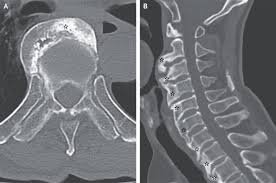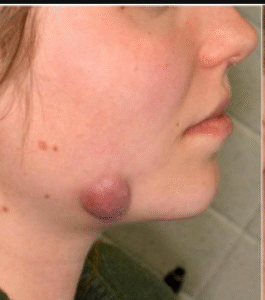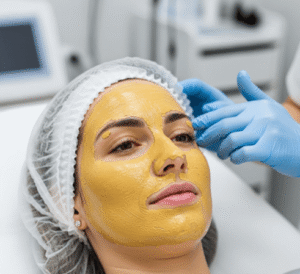What it is
A polypectomy is a surgical procedure to remove polyps from the uterus (endometrial polyps) or cervix (cervical polyps). Polyps are small, usually benign (noncancerous) growths that form on the inner lining of the uterus or cervix. They can sometimes cause symptoms such as abnormal bleeding, infertility, or discomfort.
In Korea, polypectomy is performed using advanced hysteroscopic techniques and minimally invasive methods that ensure safety, precision, and quick recovery.
➡️ Key points about polypectomy:
- Removes polyps while preserving fertility and uterine health
- Outpatient procedure in most cases
- Can be diagnostic (checking for cancerous changes) or therapeutic (relieving symptoms)
Why it’s done
Polypectomy is recommended when uterine or cervical polyps cause symptoms or raise concerns about cancer risk.
✔️ Medical reasons for polypectomy:
- Abnormal uterine bleeding (heavy, irregular, or postmenopausal bleeding)
- Infertility or recurrent miscarriage linked to uterine polyps interfering with embryo implantation
- Cervical polyps causing discharge or bleeding after intercourse
- Suspicion of precancerous or cancerous changes on biopsy
✔️ Benefits of polypectomy:
- Restores normal menstrual cycles
- Improves fertility outcomes
- Provides tissue for lab testing (to rule out malignancy)
- Quick, safe, and minimally invasive procedure
Alternatives
Not all polyps require removal. Alternatives may be considered depending on symptoms and size.
🔹 Watchful waiting:
- Small, asymptomatic polyps may resolve spontaneously
- Regular monitoring with ultrasound or hysteroscopy
🔹 Medication management:
- Hormonal treatments may reduce bleeding symptoms but do not eliminate polyps
- Temporary relief rather than permanent solution
🔹 Hysterectomy:
- Considered only for women with recurrent polyps, severe bleeding, or high cancer risk, and who no longer wish to preserve fertility
Preparation
Proper preparation ensures effectiveness and minimizes risks.
➡️ Medical preparation:
- Ultrasound or hysteroscopy to confirm presence and location of polyps
- Endometrial biopsy if abnormal bleeding raises concern for cancer
- Blood tests to evaluate general health and rule out anemia
➡️ Personal preparation:
- Procedure is often done on an outpatient basis, but patients may need someone to drive them home
- Avoiding food or drink before the procedure if anesthesia will be used
- Wearing comfortable clothing for hospital visits
➡️ Mental preparation:
- Understanding that polypectomy is typically simple and low-risk
- Preparing emotionally for possible mild cramping or light bleeding afterward
How it’s done
In Korea, polypectomy is most commonly performed via hysteroscopic surgery, which allows direct visualization and precise removal.
✔️ Step 1 – Anesthesia
- Local anesthesia, sedation, or general anesthesia may be used depending on case complexity
✔️ Step 2 – Accessing the uterus or cervix
- A hysteroscope (thin, lighted tube with a camera) is inserted through the vagina and cervix
- Allows doctors to locate polyps with precision
✔️ Step 3 – Removal of polyps
- Specialized surgical instruments (scissors, electrocautery, or morcellators) remove the polyp from the uterine or cervical wall
- Tissue is sent for pathology to rule out cancer
✔️ Step 4 – Completion
- Uterine cavity checked to ensure no residual polyps remain
- No incisions required, as the procedure is entirely through the vaginal route
✔️ Duration:
- Typically 20–45 minutes
- Most patients go home the same day
Recovery
Recovery after polypectomy is usually smooth and quick.
➡️ Immediate recovery:
- Mild cramping and light bleeding for a few days
- Fatigue if sedation or anesthesia was used
➡️ Physical recovery:
- Return to normal activities within 1–2 days
- Avoiding sexual intercourse, tampons, or douching for about a week
- Menstrual cycles usually normalize within 1–2 months
➡️ Emotional recovery:
- Relief from abnormal bleeding improves quality of life
- Reduced anxiety after receiving pathology results confirming benign condition
➡️ Key recommendations for recovery:
- Rest on the day of procedure
- Adequate hydration and balanced diet
- Follow-up visit to review pathology results
- Monitoring for symptoms like heavy bleeding, fever, or severe pain
Treatment option in Korea
Korea offers highly advanced and patient-focused care for uterine and cervical polyp removal.
✔️ Hospital facilities:
- State-of-the-art hysteroscopic equipment for precision removal
- Outpatient surgery centers allowing same-day discharge
- Quick pathology testing for peace of mind
✔️ Medical expertise:
- Experienced gynecologic surgeons specializing in fertility-preserving procedures
- High success rates with minimal recurrence
- Use of minimally invasive methods for faster recovery
✔️ Postoperative care:
- Follow-up programs to monitor recurrence or new growths
- Counseling for women concerned about fertility or cancer risk
- Integration of traditional Korean wellness practices, such as dietary guidance, to support recovery
✔️ Cultural aspect:
- Korean women’s health culture emphasizes quick return to daily life with minimal disruption
- Hospitals provide personalized aftercare, including emotional support and lifestyle recommendations
➡️ Highlight: Polypectomy in Korea offers safe, precise, and minimally invasive removal of uterine and cervical polyps, ensuring relief from symptoms, preservation of fertility, and peace of mind with comprehensive aftercare.













